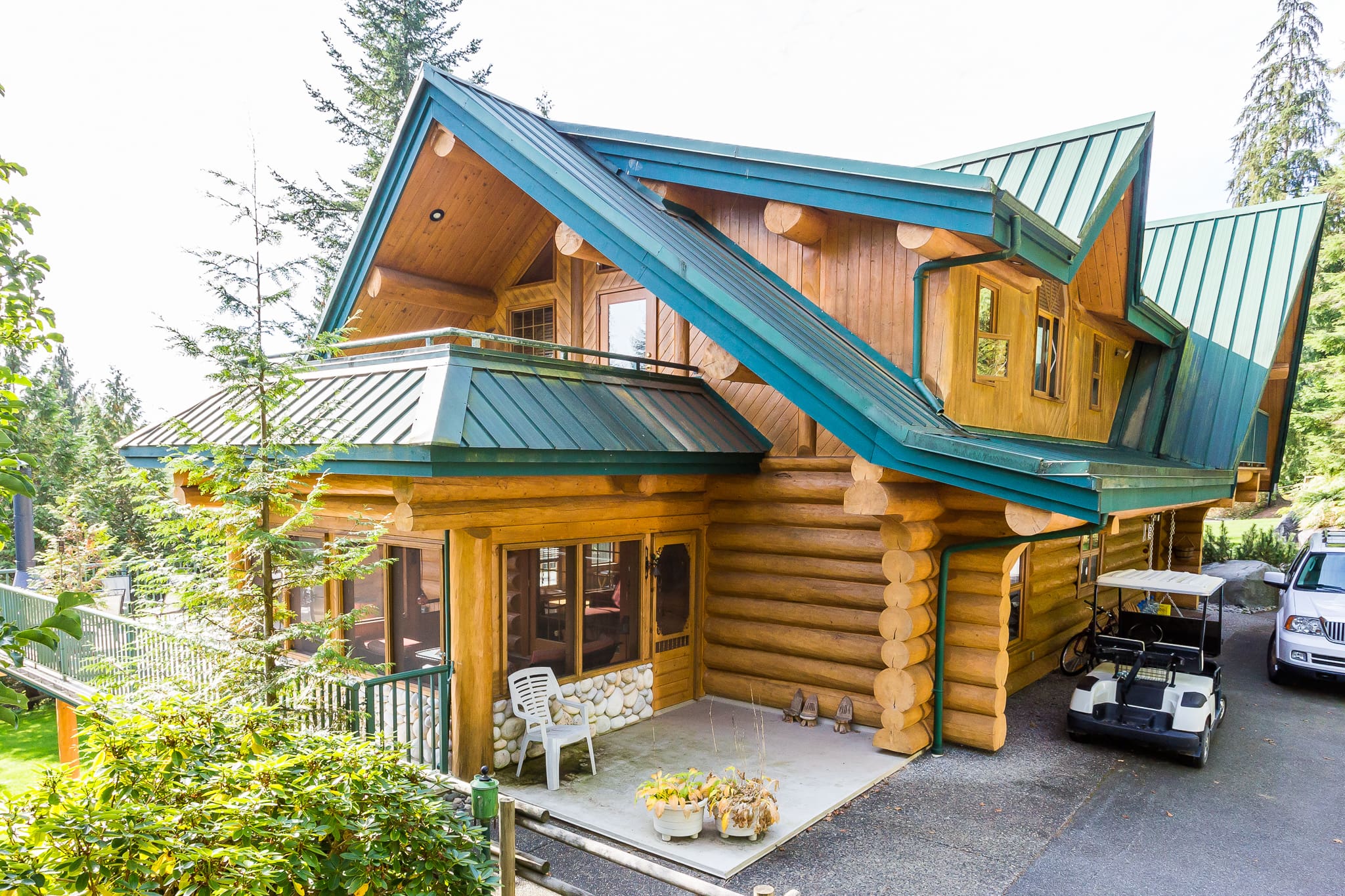What does “log home settling” mean and what do you need to know?
It is no surprise why people want a Full Scribe Log Home – they are equally as beautiful on the outside as they are on the inside. Log homes consist of stacked logs that become the interior and exterior walls, but are also the structural support for the entire home. When you see a traditional log home, it is usually referred to as a ‘full scribe’ log home. This means that logs are cut out with specific notches to allow them to be stacked horizontally on top of one another to form walls.
What is Log Home Settling?
If you’ve been looking into building a log home, you’re probably familiar with the term “settling’. Log home settling from wood shrinkage is a natural characteristic that you should be prepared for when constructing a full-scribed log home. To put it simply, settling is the compounding effect of logs shrinking as they dry and compress during installation.
Anticipating shrinkage and compression prior to construction (which any good builder will do), will help the whole building process and quality of your log home. All wood shrinks from its original size to a smaller diameter as the wood dries over time. Most wood shrinkage if not accounted for will take up a homeowners time and cause unwanted expenses. During the first few years when the majority of log settling takes place, a wall may lose anywhere from ¾-1 inch per foot of wall height.
Why is log home settling bad if not done correctly?
Settling occurs in any type of log structure that has the ability to come apart. About a year later when the logs have finished drying, the settling will be noticeable if not installed correctly. We’re talking windows cracking, doors not closing properly, stairs becoming uneven, you name it… What’s worse than your new log home having structural damage a year into living in it?
Not to get too technical, but once the moisture content of wood matches the humidity level of its current environment the wood will stop shrinking. The correct terminology for this is called Equilibrium Moisture Content (EMC). Therefore a builder will know and take into consideration the moisture content of the material and its environment when assembling the log home and its compression.
What is compression and why is it important?
Wood compression is the squeezing and pressure that occurs between the wood fibres as the weight of each log is being applied on one another. This process is usually quite minimal unless again, the logs have not been properly installed. A tightening system is typically recommended to ensure ample pressure is applied and to ensure the log system compresses properly.
How do you exactly control Log Settling?
To get the correct tightening systems in place a builder will add settling space above doors and windows by adding screw jacks or steel posts to lower them as the log walls settle to account for any height differences that will follow during settlement. This also applies when constructing steps, to make them slightly shorter in anticipation for the floor heights to settle. Slip joints will be mounted around windows and doors so that the openings remain square even as the wall settles. It’s also important to note that any cabinets being installed in the home will only be attached to one log.
When it comes to big structural areas such as the roof and walls, rebar will often be used to combat the settling and a space will be left in-between, also referred to as “chink” – the narrow opening also more commonly known as a crack.
Keep in mind though, these systems need to be properly put in place or you’re just causing extra damage to the home. Been sure to consult with your builder the proper hardware that is going to be used and for any other additional areas of the home that will be properly cared for.
Note – Try and avoid using any seals on the wood, as this can trap moisture inside and prevent the wood from breathing.
The Advantages of Full Scribe Log Homes
- The strong structure is meant to withstand all weather conditions.
- Extremely energy efficient.
- Easy to maintain if built correctly.
- Due to their structure, there is no need for siding, insulation or drywall.
Disadvantages of a Full Scribe Log Home
- The lengthy settling process and the correct procedures that follow.
- Special installation and procedures need to take place when it comes to the plumbing, electrical and carpentry required to finish the home.
- Generally speaking, these types of homes are costly due to the extra love and extensive labour and logs needed to produce this type of home.
Our full scribe handcrafted log homes are built with a strong and durable structural design, which we are proud to stand by. Interested to know more about Log Home Settling or have additional questions? If you want to discuss your log home design, log cabin structure or construction plans with our experts at Artisan Log Homes, please contact us today!


